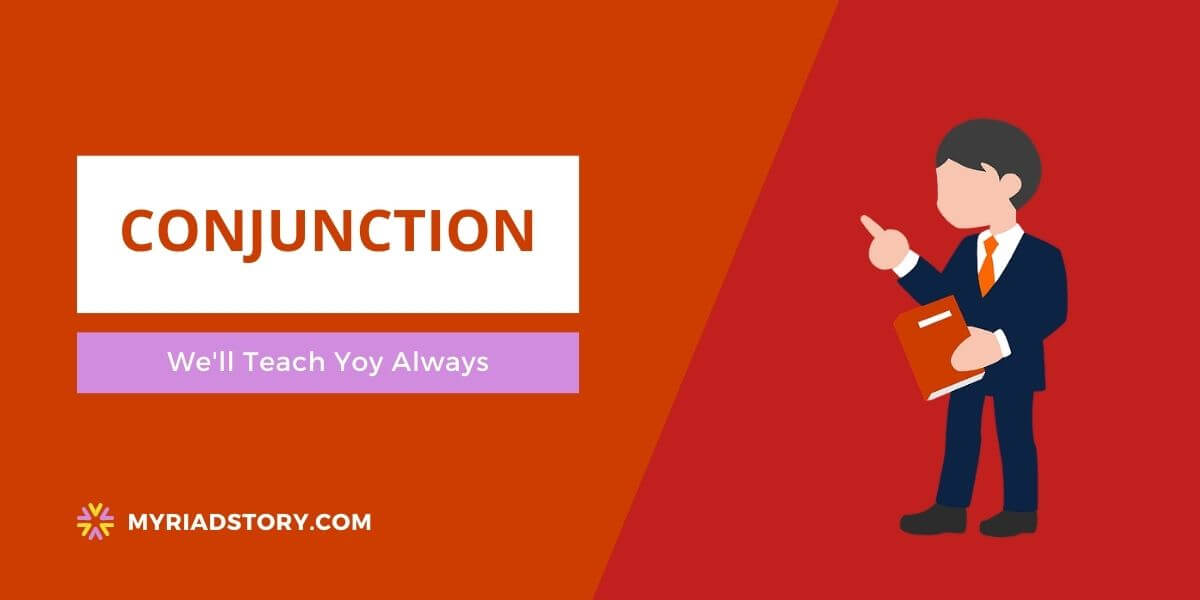CONJUNCTION
DEFINITION: – A conjunction is a word that joins sentences, words, nouns, pronouns, and clauses.
Example: – Ram and Mohan go to school.
⇒ Kinds of conjunction: – There are two types of conjunction,
- Coordinate conjunctions.
- Sub-ordinate conjunctions.
⇒ Coordinate Conjunction:- Coordinate conjunctions are applied to join two or more clauses of equal rank. Sub-ordinate conjunctions are classified into four categories.
- Cumulative
- Adversative
- Illative
- Alternative
⇒ Cumulative Conjunction: – These conjunctions are used to join simple statements. These conjunctions are: –
And
As Well As
Not Only – But also
Both – and.
Example: –
- Shakespeare was a poet and playwright.
- You as well as I am reading a book.
- He is not only my friend but also my teacher.
- She is both a poet and a dancer.
⇒ Adversative conjunctions: – These conjunctions are used to join paradoxical statements.
⇒ Yet/but/still /Whereas.
Example: –
- He is rich yet/but/still he is not happy.
- He was rich were as his father was poor.
Illative: – Shows inference.
So/therefore: –
Example: –
- He was ill so he did not go to the office.
Or
He was ill therefore he did not go to the office.
⇒ Alternative conjunctions: – These conjunctions are used when the choice is given.
Or, otherwise/else
Either – or,
Neither – nor.
Example: –
- Come in or go out.
- Run fast otherwise you will miss the train.
- Either Ram or his friends have done their homework.
- Neither Ram nor his father went to Agra to see the Taj Mahal.
⇒ Subordinate conjunctions: – Subordinate conjunctions are the words that are applied to join subordinate clauses with principal clauses. Actually subordinate to form complex sentences.
⇒ Now let us discuss sub-ordinate conjunctions.
That/who/which/than/if/whether |
⇒ That: –
Example: – Ram says that he will go to the market to buy some toys for his Daughter.
⇒ Who: – is used, persons.
Example: – I saw a man who was blind.
⇒ Which: – is used for non-living things.
Example:- This is the pen which you gave me two days ago.
⇒ If/whether: –
Example: – She wanted to know if I was reading a novel the previous day in my study chamber.
Or
She wanted to know whether I was reading a novel the previous day in my chamber.
⇒What: – (Reason).
Example: – I know the reason why she was angry.
⇒ Such As: – is used to indicate someone or something of a specific sort.
Example: – Citrus fruits such as orange are rich in vitamin ”C ”.
⇒ As If: – is used to indicate the sense of false impression.
Example: – She walks as if she were an actor.
⇒ Lest: – is followed by should. It is used to indicate the outcome or the consequences for not paying need to caution.
Example: –
- Make haste lest you should miss the train.
- Work hard lest you should fail.
⇒ While: – if tells…
- Time duration.
- At the same time.
- Whereas.
Example; –
- Make haste while the sun shines.
- While she was in London some thieves broke into her house.
Hardly — When
Scarcely — When
Example: –
Hardly had I reached the station when it began to rain.
Or
Scarcely had I reached the station when it began to rain.
⇒ No sooner – than.
Example: –
No sooner did he reach the station than it began to rain.
Or
No sooner had he reached the station than it began to rain.
⇒Although/though Yet. ————–. (is used to indicate two contradictory qualities.)
Example: – Though/Although he worked hard yet he could not get good marks.
⇒Then: – is used with a comparative degree.
Example: – The climate of Agra is hotter than that of Srinagar.
Note: – {Hardly/scarcely + had + S + V3 + ob + when + sub+ V2 + ob}
Note: – {No sooner + did + s + V1 + ob + than + sub + V2 + Ob}
Or
{No sooner + had + s + V3 + ob + than + sub + V2 + ob
I hope guys like this conjunction. Please share this Article ( conjunction exercises ) with your friends and family.
SOCIAL MEDIA LINKS
- Twitter: CLICK HERE
- Instagram: CLICK HERE
- Facebook: CLICK HERE
Also Read-
Tense Chart in English – Tense Types, Definition, Rules
Past Tense | Simple Past Tense – Formula and Charts
Present Tense | Simple Present Tense – Formula and Charts
